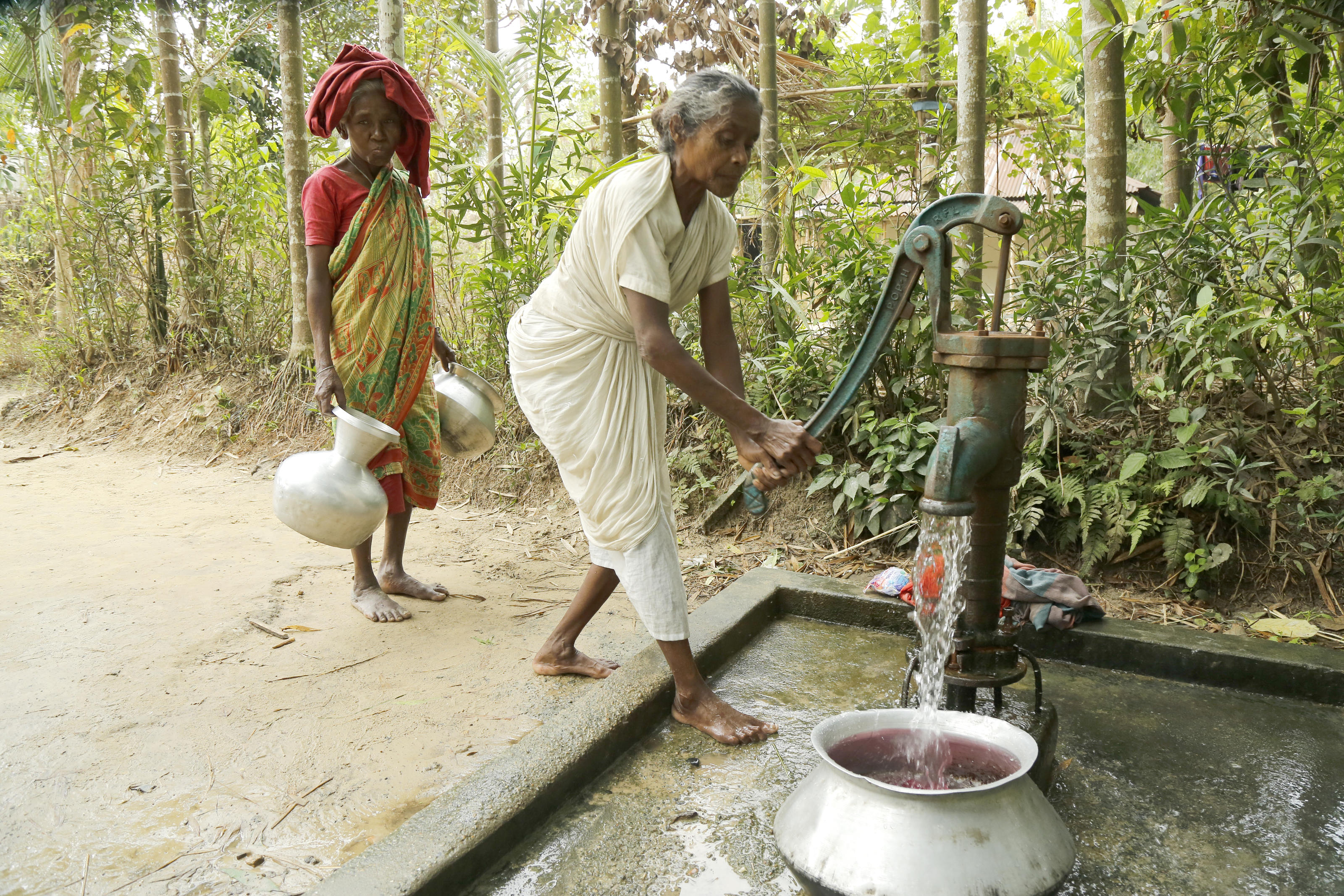Small investment, big rewards: handwashing devices

Public health advice on handwashing during the COVID-19 pandemic is difficult for many living in rural communities to follow without a running water supply. Here, members of the WaterAid Bangladesh team introduce their manual of easy-to-use, context-based handwashing devices designed to overcome challenges of affordability and accessibility to include everyone. Since the onset of COVID-19 in Bangladesh, the country has been flooded with the primary public health message to ‘frequently wash hands for at least 20 seconds’, following advice from the World Health Organization (WHO).
In theory, handwashing with soap is an easy, effective and affordable do-it-yourself preventive measure against COVID-19. The media have played a dynamic and vital role in promoting handwashing with soap and disseminating this core preventive message across the country. But, while appreciating these correct and whole-hearted efforts from all corners, a critical observation is that most of the promotional materials show running water. This can leave the more than 63% of people in Bangladesh who live in rural areas feeling excluded, because most of the rural population uses one of various types of hand-powered tubewells or another kind of community-managed waterpoint.
Rural communities often carry water from waterpoints or nearby sources such as ponds to latrines for washing their hands after defecation. People store water in their kitchens or other suitable places in their households for washing hands before or after eating. The situation is similar in slums and low-income communities in urban areas; water is available only at community-managed waterpoints, having extended connection from water utilities or typical tubewells, depending on the context. In densely populated urban slums, people require handwashing at entry and exit points to reduce spread of COVID-19. This is difficult due to a lack of adequate and appropriate facilities. To address these challenges, we have designed simple, context-specific and affordable handwashing devices with running water for both public places and households, with support from our partner NGOs, enthusiastic social workers and local entrepreneurs. We have promoted a wide variety of handwashing devices during COVID-19 for both rural and urban contexts, to enable even the most marginalized communities to wash their hands easily with running water.
In our work promoting handwashing devices over many years, several innovative and low-cost models have been developed, such as the Tippy Tap, a tap attached with a barrel or clay pot and many others. Many of the low-cost models were created by local inventors, together with WaterAid and our partner NGOs. We have compiled 22 different types of handwashing devices in an easy-to-use manual, including descriptions and cost estimations so people can identify the most appropriate device for a particular context and set it up. The devices mostly require locally available materials, which increases their affordability.
One of the best innovations introduced during the coronavirus pandemic and included in the manual is the contactless pedal type handwashing device, which enables people to wash their hands without touching the tap. This minimizes the risk of the spread of COVID-19 and other communicable diseases, while also reducing wastage of water. The manual also includes handwashing devices that enable children and people with disabilities to access and use the facilities easily. And there are guides to enable people in hard-to-reach rural areas to make their own handwashing devices in their yards using a tap attached to a mini drum, earthen pot or plastic bowl to collect used water, fixing this simple system using mud. Tippy Taps are another very simple handwashing device included that are also useful in rural Bangladesh.
Our manual is publicly available and we are sharing it widely with water, sanitation and hygiene (WASH) sector actors. Several organizations and individuals have already reached out and proactively started using the suggested designs for developing handwashing devices using their own resources. We have also developed a design specification for public handwashing stations, to encourage best practices in handwashing design.
Handwashing with soap has been recognized as one of the most cost-effective inventions in public health. According to WHO, an investment of just US$3.35 in handwashing promotion is estimated to deliver the same amount of health benefits as does an $11 investment in latrine construction, or a $200 investment in household water supply. The COVID-19 pandemic offers an opportunity to change hygiene behaviors for good and reap the long-term health benefits. And it is an opportunity to ensure everyone has the facilities they need to maintain these new behaviors.